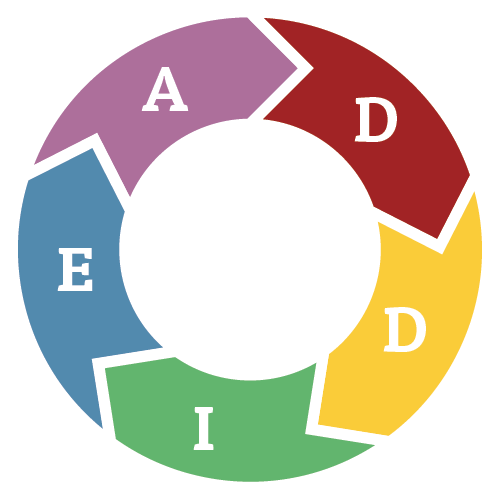What is ADDIE model taxonomy in education?
ADDIE model
The ADDIE model is a systematic instructional design model consisting of five phases:
(1) Analysis, (2) Design, (3) Development, (4) Implementation, and
(5) Evaluation.
These five phases represent a dynamic, flexible guideline for building effective training and performance support tools.

The five phases of ADDIE, in detail are:
- Analysis
Analysis is all about identifying the learning obstacles, the goals, the objectives, different needs of the learner’s, current knowledge possessed by them, and any other relevant key points related to those.
In the analysis phase, instructional problem is clarified, the instructional goals and objectives are established and the learning environment and learner’s existing knowledge and skills are identified. Below are some of the questions that are addressed during the analysis phase:
Analysis also considers the learning environment, the constraints related, delivery methods, and then proposes a timetable for the project.
- Design
Design is the phase in which the learning objectives are specified. Detailed plans and prototypes are often constructed. The design, user-interface and the content are all determined in this phase.
The design phase deals with learning objectives, assessment instruments, exercises, content, subject matter analysis, lesson planning and media selection. The design phase should be systematic and specific.
Systematic means a logical, orderly method of identifying, developing and evaluating a set of planned strategies targeted for attaining the project’s goals.
Specific means each element of the instructional design plan needs to be executed with attention to details.
- Development
The actual production of the contents and learning materials that are based on the Design phase in done in the Development phase.
The development phase is where the developers create and assemble the content assets that were created in the design phase. Programmers work to develop and/or integrate technologies. Testers perform debugging procedures. The project is reviewed and revised according to any feedback given.
- Implementation
In the Implementation phase, the proposed plan is put into action and a methodology for training the learner and instructor is developed. Also, the learning materials are delivered to the student group and their effectiveness are evaluated.
During the implementation phase, a procedure for training the facilitators and the learners is developed. The preparation of the learners for this phase include training them on new tools (software or hardware).
The facilitators’ training should cover the course curriculum, learning outcomes, method of delivery, and testing procedures.
- Evaluation
During evaluation, both formative and summative forms of evaluations are employed. Although formative evaluation is present in each stage of the ADDIE process, the presence of summative evaluation here contributes tests and other assessments designed for providing statistics and feedbacks from the learners. Revisions are also made necessary in this phase.
Each phase in this paradigm has an outcome that feeds into the next phase in the order.
There are over a hundred variations of the standard ADDIE model and each one was developed to serve specific learner needs depending on the audience. Also, conducting continuous evaluations and examining feedbacks are often cited as ways to improve the standard ADDIE model.